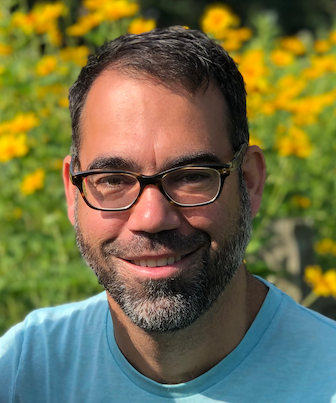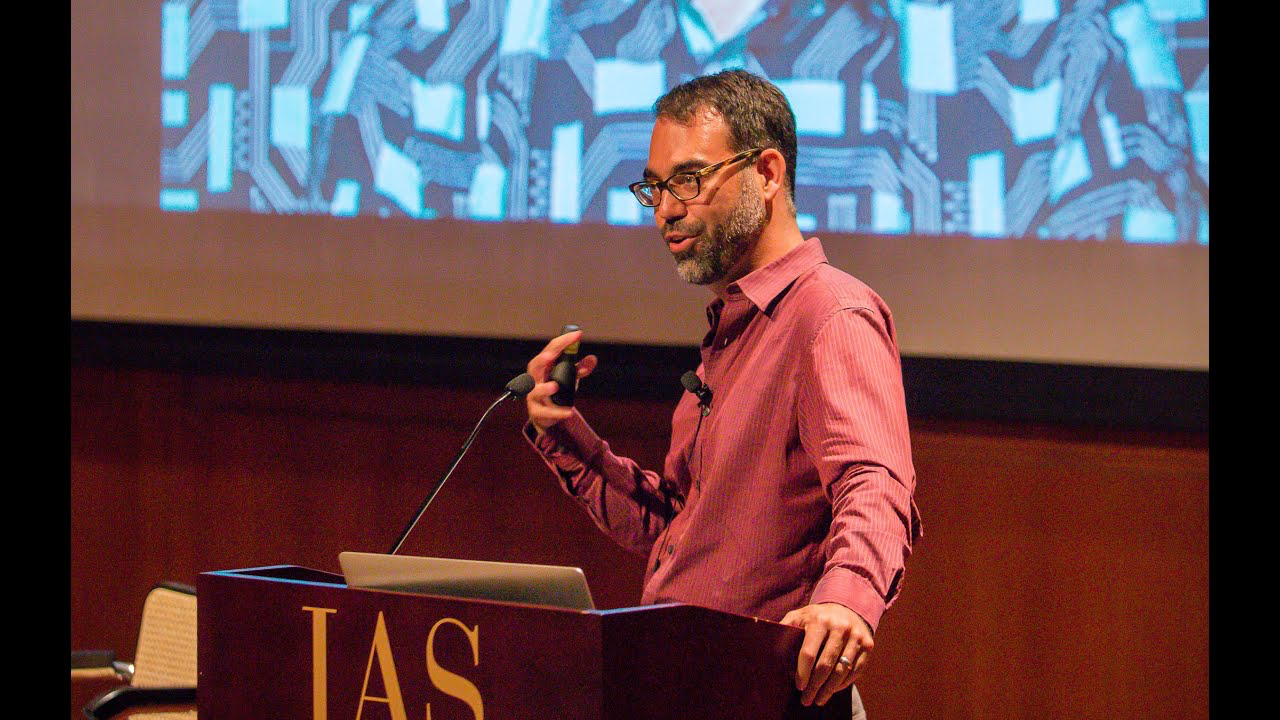Kyle Cranmer, a member of the executive board for the Institute for Research and Innovation in Software for High-Energy Physics (IRIS-HEP), has been selected as the next director of the American Family Insurance Data Science Institute at the University of Wisconsin–Madison. He will assume leadership on July 1.
Currently a physics professor at New York University and a member of the ATLAS collaboration at CERN’s Large Hadron Collider (LHC), Cranmer helped build the collaborative statistical modeling framework that was instrumental in the 2012 discovery of the Higgs boson. But his academic pursuits extend far beyond particle physics, encompassing fields as diverse as cosmology, genomics, and computational neuroscience. In particular, Cranmer is keenly interested in the intersections between scientific endeavors.
In recent years, his work has explored the relationship between theory and experimentation, between machine learning and statistics, and between mathematics and the underlying structure of the universe. In his role at UW-Madison’s data science institute, Cranmer aims to facilitate collaboration between experts in disparate fields to help transform fundamental research into practical applications.

Cranmer obtained his doctorate in physics from UW-Madison in 2005. Photo credit: Kyle Cranmer
“I feel like I’m playing in other peoples’ backyards,” he says. “One of the skills I’ve picked up over the past five years is to be an effective translator between different fields. This position is all about that.”
Cranmer’s fascination with data science intensified during a sabbatical that he took following the Higgs discovery. “I took that opportunity to think much more broadly,” he says. “This was a time when deep learning was exploding, and I was thinking about how we can abstract it and reframe it for the physical sciences.”
Headquartered at Princeton University, IRIS-HEP aims to develop the software infrastructure needed for the High Luminosity Large Hadron Collider and other high-energy physics experiments planned for the 2020s and 2030s. Supported by a grant from the National Science Foundation, IRIS-HEP also aims to find solutions that are relevant to other data-intensive fields.
Some of these solutions can help address broader social problems. Cranmer, an active member of the physicists’ advocacy group Particles for Justice, says that aspects of his work can help address some of the inequities that arise from the use of machine learning in domains such as employment, lending, health care, and criminal justice.
“In machine learning there are many parallels and issues of fairness that happen to people and things that happen in a particle physics context,” he says. “I was able to transfer my intuitions about how things can go wrong.”
Cranmer credits his experience working with IRIS-HEP, as well as its predecessor organization, DIANA/HEP, for providing an opportunity to explore the ways that software solutions developed for high-energy physics experiments can be applied to other domains, and vice versa.
“We develop all sorts of fancy techniques at the LHC,” he says. “Some of that has to be relevant for industry.”
Scientists at the LHC and other high-energy physics experiments rely on complex computer simulations of particle collisions and their outcomes. Such simulations are useful for describing the complex patterns left in the detectors from particle collisions, but they are notoriously awkward to work with when it comes to inferring a system’s physical parameters, such as particles’ masses and coupling strengths, from data. To a physicist, understanding the values of those parameters is essential to formulating the laws of nature.
“Physicists in their bones are looking for some kind of story, to the extent that there is one, about how the data comes into being,” he says.
Much of Cranmer’s work in recent years has focused on using machine learning methods and simulations to infer these values from data. These methods, he says, can be used for simulations in many other fields.
“You have simulations for COVID. You have simulations for cosmology,” he says. “It’s very easy to position the research that I do as broadly applicable. The freedom that allowed me to do that was the IRIS-HEP grant.”

This architectural rendering shows the University of Wisconsin-Madison’s School of Computer, Data & Information Sciences (CDIS) building, which is scheduled to open in 2024. The CDIS building aims to foster collaboration by bringing the university’s Information School, the department of Computer Sciences and Statistics, the department of Biostatistics & Medical Informatics, the Center for High Throughput Computing, and the American Family Insurance Data Science Institute under one roof. Image credit: Kahler Slater and LMN Architects
